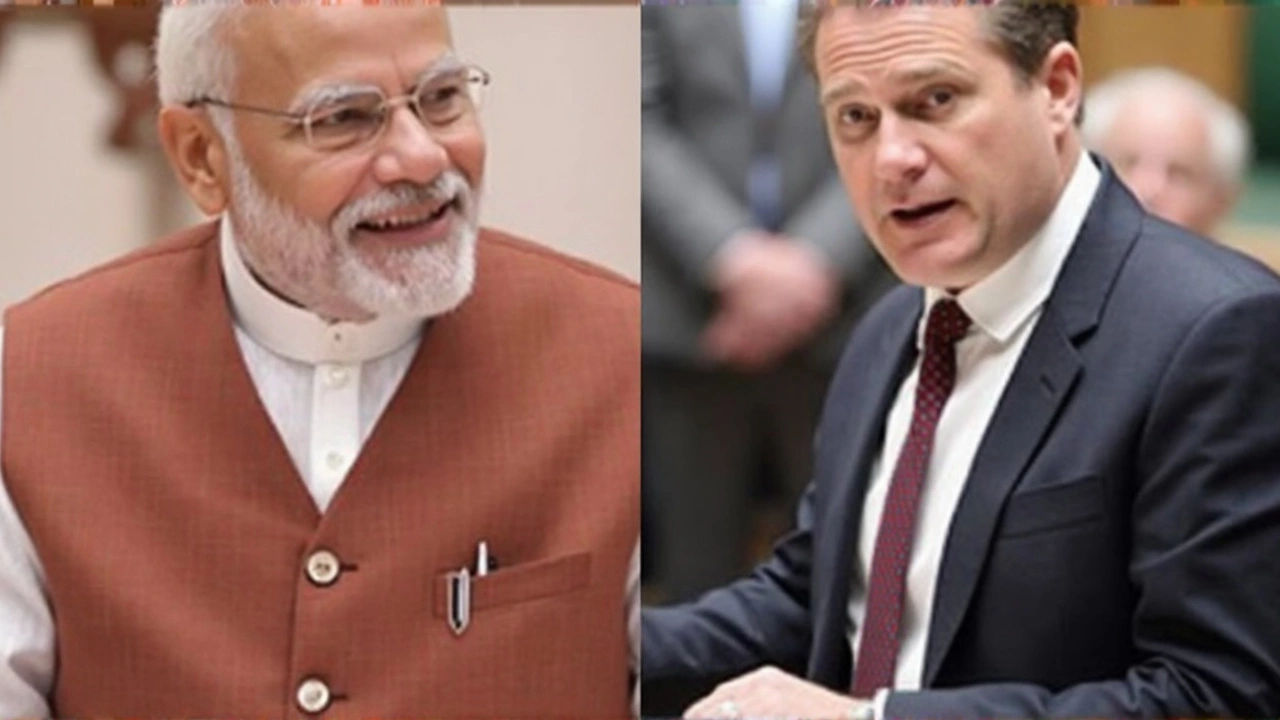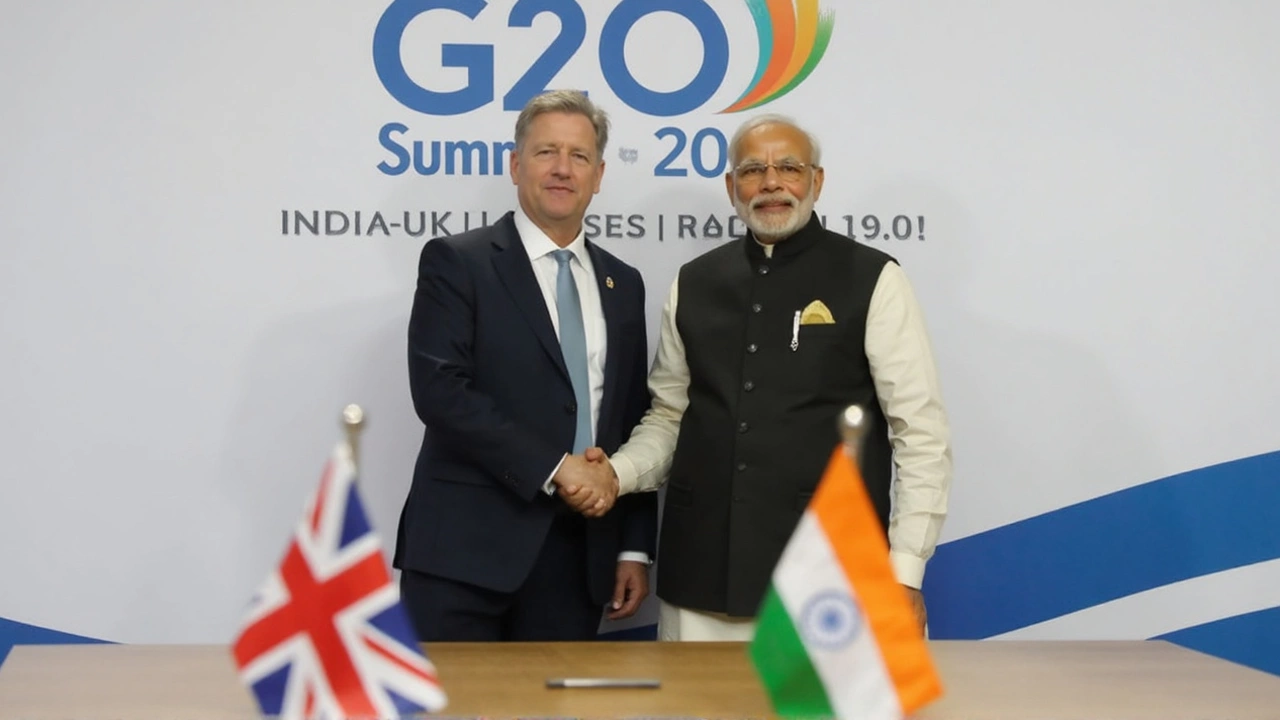India-UK Free Trade Agreement Marks Landmark Shift in Bilateral Ties
 May, 7 2025
May, 7 2025
India and UK Strike Expansive Free Trade Deal
There’s been a massive shift in the trade landscape between India and the UK, and it’s got everybody talking. On May 6, 2025, Prime Minister Narendra Modi and UK Prime Minister Keir Starmer announced the clinching of what’s being called a historic India-UK Free Trade Agreement. That’s not just political hype—this pact cuts through 90% of tariff lines, sweeping past things like clothing, cars, machinery, and a lot more. That’s the kind of move that doesn’t just show up in the news for a day; it sticks around to shape economies for years.
This India-UK Free Trade Agreement is being thrown around as the biggest win for the UK since Brexit and India’s most ambitious FTA ever. We’re not talking small change here: projections suggest it’ll add £4.8 billion a year to the UK economy by 2040. That’s not just some hopeful guess—this estimate comes from government modeling that looks at lower tariffs, more goods flowing in both directions, and easier access for businesses to operate across borders. PM Starmer called it “the UK’s largest-ever post-Brexit trade deal.” Modi wasn’t shy with the praise, either, crediting Starmer’s leadership for pushing the deal over the finish line and inviting him to visit India to celebrate this new chapter together.

What’s Inside the Deal?
The details here matter—a lot. This Free Trade Agreement removes trade barriers on almost everything: manufactured goods, agriculture, pharmaceuticals, apparel, information tech, you name it. The goal? Make it smoother and cheaper for businesses and consumers on both sides to buy and sell with each other. Tariffs and customs hassles have always slowed things down, but with 90% of them gone, everyone from textile producers in Mumbai to tech innovators in Manchester is set to benefit.
Let’s talk about why this deal is such a big leap. It’s not just about the value of goods—it’s got serious ambitions around services, too: finance, digital trade, education, and professional exchanges. With both economies hungry for growth, new doors are opening for entrepreneurs, students, researchers, and service professionals. The tech sector is especially excited, since both countries see themselves as global players in innovation. And clean energy companies now have far fewer regulatory walls to scale, letting them expand into new markets and scale up green transitions at home.
Another key breakthrough is the Double Contribution Convention, designed to avoid double taxation for businesses and individuals operating in both zones. For Indian and British companies that have long complained about tax headaches, this means less red tape and lower costs of doing business.
There’s more to this than just economics. Both leaders stressed the deal’s impact on strengthening people-to-people ties. That includes easier mobility for skilled professionals and students, encouraging new waves of collaboration between universities, startups, and creative industries. It’s not just about selling more products; it’s about letting ideas, expertise, and innovation cross borders with less friction.
As this new era kicks off, sectors like advanced manufacturing, artificial intelligence, clean energy, and financial services are getting positioned for rapid growth. Both sides want to see more joint research, more tech partnerships, and a steady stream of talent moving back and forth. For regular people, this should mean better choices and prices on products, and—hopefully—a shot at new jobs as companies look to expand in a market of 1.7 billion combined people.
Modi’s invitation for Starmer to visit India isn’t just formality—it’s a signal that both governments are hungry for more collaboration, not just trade statistics. If past FTAs are any guide, the real work is just starting, as their teams hammer out the nuts and bolts of implementation and get businesses ready to cash in on new opportunities.